The UPF Genomics Service analyses the DNA of the bone remains of three skeletons, one of which may belong to Pere d’Aragó i d’Anjou (Peter of Aragon)
The UPF Genomics Service analyses the DNA of the bone remains of three skeletons, one of which may belong to Pere d’Aragó i d’Anjou (Peter of Aragon)
The UPF Genomics Service analyses the DNA of the bone remains of three skeletons, one of which may belong to Pere d’Aragó i d’Anjou (Peter of Aragon)
A team of researchers from UPF, the UAB and the Germans Trias i Pujol Research Institute, accompanied by Josep Maria Saladié, a retired surgeon and promoter of the research, gained access to the Puritat de València closed order convent to extract samples of ancient DNA. The UPF Genomics Service will analyse them using cutting-edge technology, usually used to study modern DNA, and will attempt to establish whether there is a relationship of kinship between the three skeletons.
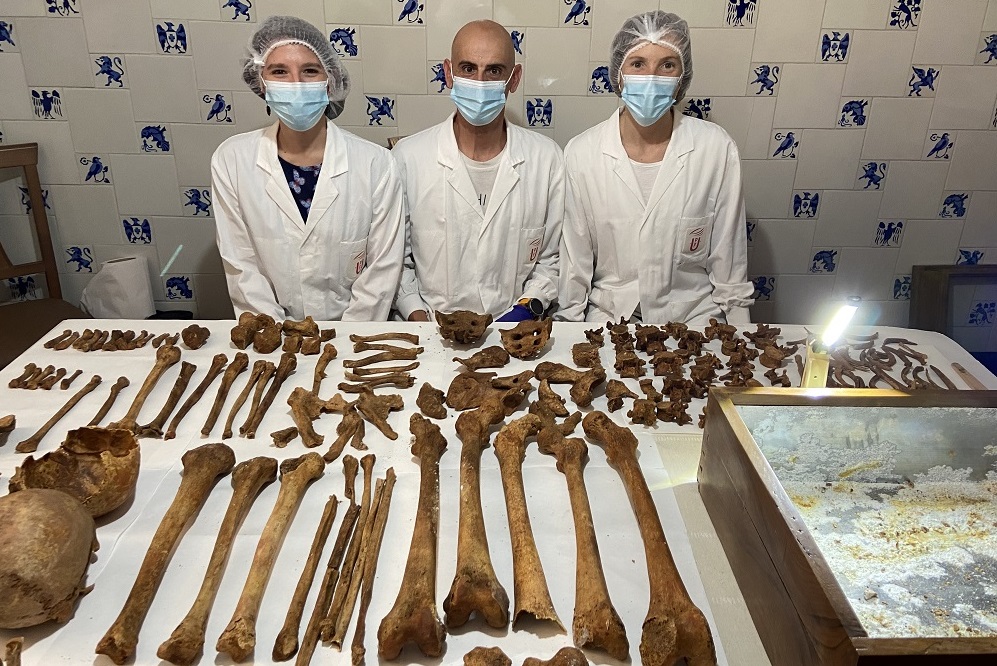
“My interest in this subject is due to the fact that royal prince Pere was the founder of the Coll de Balaguer Hospital, which would later become the settlement of L’Hospitalet de l’Infant, my home town”. Josep Maria Saladié Roig, retired doctor, former head of the Urology and Transplant Surgery Service at the Germans Trias i Pujol University Hospital in Badalona used these words to summarize the reason for which, for a long time, he has been following the movements of the remains of Pere d’Aragó i d’Anjou (Barcelona, 1305 – Pisa, 1381).
Dr. Saladié, a lover of history and a vocational scholar of royal prince Pere, has been gathering information for years about this transcendental figure of the Crown of Aragon, married in 1331 to Joana de Foix, and became count of Ribagorça, Empúries and Prades, lord of the Barony of Entença and of Gandia, as well as a poet, court artist and patron, and whose nephew Pere the Ceremonious appointed him seneschal and head of government and of the armies of the Crown of Aragon.
Dr. Saladié, a lover of history and a vocational scholar of royal prince Pere, has been gathering information for years about this transcendental figure of the Crown of Aragon
But the search route followed by Josep M. Saladié has come to a dead end straddled between two versions that remain to be proved: an initial hypothesis states that the remains of royal prince Pere are beneath the asphalt of plaça de l’Ajuntament (City Hall Square) in València, where the Franciscan convent had stood, and guarded his bones for centuries, and began to be demolished at the end of the 19th century.
Another hypothesis, which he upholds, although it is not documented, maintains that the Pere’s remains were transferred in the mid-nineteenth century to convent de La Puritat i Sant Jaume, along with those of Abu-Zayd, the last Almohad governor of the city of Valencia, converted to Christianity under James I the Conqueror, whose remains were preserved in a chapel next to that of royal prince Pere in the old Franciscan convent.
Josep M. Saladié has fought for many years to obtain all the necessary permits to get access to the closed order convent of La Puritat, to extract and analyse DNA samples from the remains of the three skeletons that are in an urn guarded by the Poor Clares nuns, and could confirm that one of the three skeletons is that of royal prince Pere.
Although it seemed an impossible mission, and after years of pulling strings (through archives, archdiocese, historians, etc.) and the repeated refusal by the abbess of the convent, Sister María Mercedes Orts, suddenly the doors were opened: “Suddenly and without knowing why, Sister María Mercedes wrote me a letter in which all the NOs of our correspondence turned into a YES, showing the greatest interest in this study. I had to sit down when I read it, I couldn’t believe it”, says Josep M. Saladié.
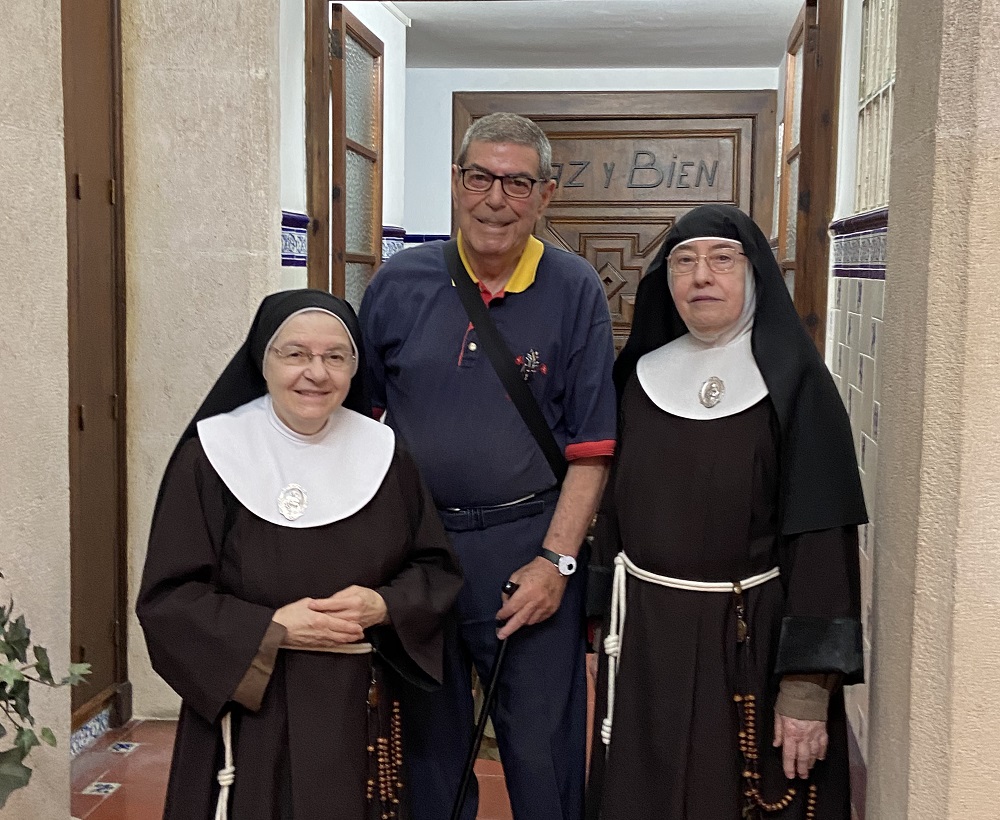
Contact with the UPF Genomics Service to get to the bottom of things
Through the Catalan Autonomic police force (Mossos), Josep M. Saladié got in contact with the Genomics Service of the Department of Health and Life Sciences (MELIS) of Pompeu Fabra University: the police force and the University service have been collaborating for some time and hold mutual training activities, by way of an agreement, to take advantage of their respective areas of expertise. In this regard, the UPF Genomics Service is participating in the forensic genetics project to analyse the skeletal remains of the mass graves of the Spanish Civil War, under the Catalan Government’s plan to restore historical memory, in order to find missing family members.
The two versions on the table are, on the one hand, that of the Poor Clares, who believe that the three skeletons belong to Abu-Zayd and two of his sons (an undocumented extreme and, according to Josep M. Saladié, unlikely), and on the other hand, Josep M. Saladié’s own version, that one of the skeletons may correspond to royal prince Pere, although there is no document to prove it either, despite the fact that he upholds this on grounds of historical coherence.
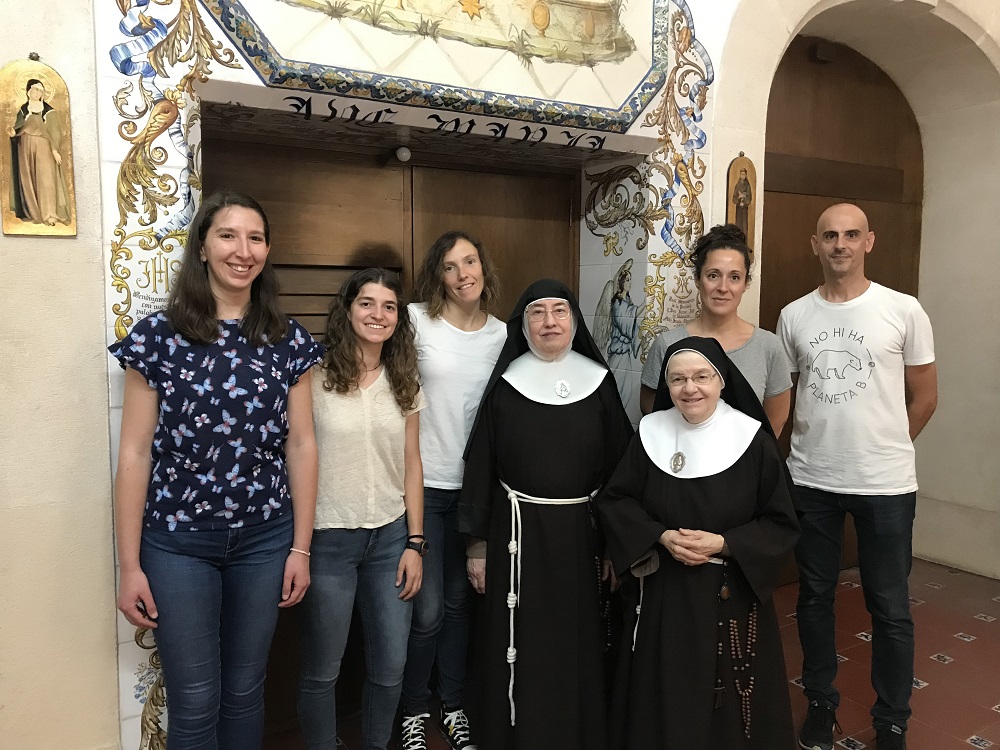
Expedition to convent de la Puritat and treatment carried out on the bone remains
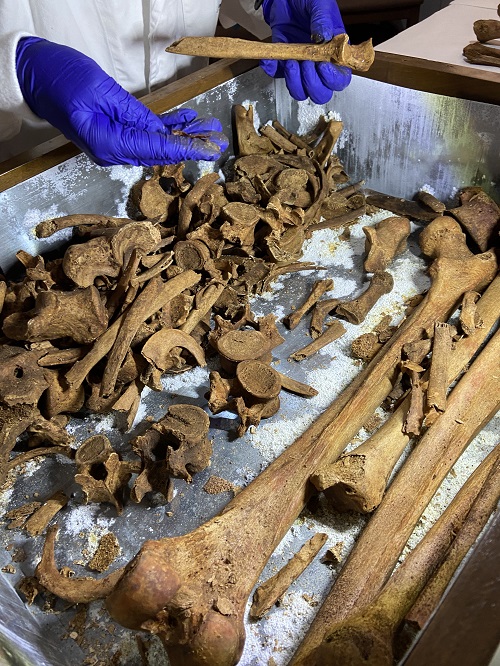
Noemí Párraga, a postdoctoral researcher at the Germans Trias i Pujol Research Institute (IGTP), as an intermediary, was the first person to interact with the UPF Genomics Service to set about affairs. Finally, the expedition commissioned to travel to Valencia in mid-June 2023 to extract DNA samples was formed by Núria Bonet, Roger Anglada and Raquel Rasal, technical staff of the UPF Genomics Service; Marta Riba, an anthropologist from the UAB, linked to the Civil War mass graves project, with knowledge of the treatment of bones; Noemí Párraga (IGTP), and finally, Josep M. Saladié, the true promoter and soul of the research, who will take care of all the expenses involved in the different analyses by the laboratory of the UPF Genomics Service.
According to Roger Anglada, the reception by the nuns was fantastic, contrary to what could be expected: they helped in every way and allowed access by all the members of the expedition to the facilities of the convent. Likewise, the nuns enabled a room adjacent to the part open to the public (where they sell cakes, artisan biscuits, etc.) to be able to work with the bone remains deposited in a wooden urn, usually located at the top of some stairs next to the altar of the church.
The action carried out by the team, with growing interest by the nuns (both the residents of the convent de La Puritat and other congregations, also present), was to extract all the bones from the urn (greatly deteriorated, and whose restoration was proposed), clean and record the bones of the three skeletons (pieces were missing from all three), and put the material in various boxes, all duly separated, classified and grouped according to the different parts of the body, and following the criteria of the experts. During the process, samples were extracted from the most appropriate parts for analysis.
Entering convent de La Puritat to extract samples, a major milestone
One thing the expedition members agree on is the exceptional fact that they were actually able to get access to the convent, which once seemed unattainable. “For us, to be able to enter the convent to extract the samples is reward in itself, regardless of the results”, asserts Roger Anglada, who explains that little by little they gained the trust of the nuns.
Roger Anglada: “For us, being able to enter the convent to extract the samples is reward in itself, regardless of the results”
Josep M. Saladié, meanwhile, wholeheartedly agrees: “Just being able to extract samples for the study of DNA, in a closed order monastery, with very strict rules, is for me a great success. Regarding the results, I have a premonition that they will be the ones we are expecting, and they will put the cherry on the cake”, he assures.
Thus, Josep M. Saladié is surprised that Valencian institutions and government have not shown an interest in learning more about such a valuable figure as royal prince Pere (it is worth mentioning an article published in the weekly El Temps in 2016 on the issue), that has been so closely related to the territory.
History of the remains of royal prince Pere, linked to those of Abu-Zayd
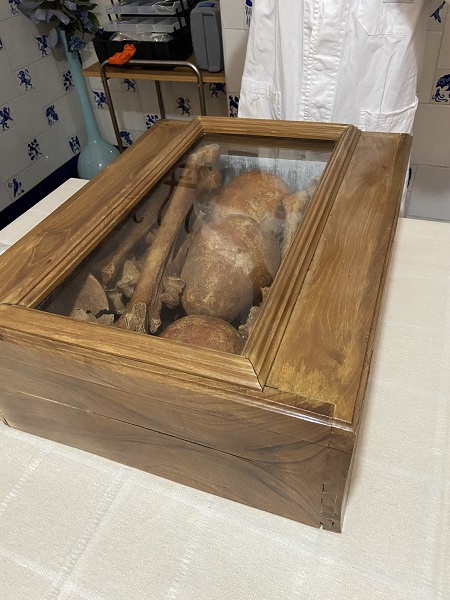
Pere died in Pisa in 1381, and ten years later, in 1391, his remains were transferred to the Convent of Saint Francis in Valencia. They were placed in an urn inside the chapel of the Cardona family, an illustrious Valencian lineage. According to the Franciscan historian and priest Andreu Ivars (1885-1936), a scholar of the figure of royal prince Pere, the last reference to the urn dates from 1732. For Ivars, the urn could have been destroyed in 1812, in an episode of the War of Independence, in which Spanish soldiers took refuge in the Convent of Saint Francis, and to combat the cold, they used all the available wood, even the boxes of the buried Franciscan friars.
In the same Franciscan convent, in a separate chapel, were the remains of Abu-Zayd, the last Almohad governor of the city of Valencia. Shortly before the Reconquest and the entry of king James I, he converted to Christianity, and adopted the name of Vicent Bellvís. On the arrival of James I, the former Muslim governor ceded his palace to the Franciscan order so that it could set up its convent there. When he died in 1268, he asked for his remains to rest in the convent of Saint Francis.
After the destruction caused by the War of Independence and Mendizábal’s decree of confiscation of 1835, and before the convent performed other functions, the remains of Abu-Zayd were transferred (according to oral records) to Convent de la Puritat, very close to the today’s Palau de la Generalitat valenciana, but there is no record that the remains of royal prince Pere took the same path. In 1891 the Convent of Saint Francis was gradually demolished, and throughout the twentieth century the area suffered several urban interventions, carried out in an uncontrolled manner.
For Josep M. Saladié, “anything might have happened with Pere’s real remains. But I find it hard to believe that such an important figure in the politics of the Crown of Aragon, buried in a separate pantheon (private, belonging to the Cardona family), was piled up with the rest of the monks buried there. Nor should the same have happened to the remains of Abu-Zayd, who also had a pantheon of his own”. And he adds: “Surely some officer (as a corporal or a sergeant), without knowing which figures they were dealing with, must have indicated to set them apart from the others. These are the remains that may have been kept since then by the Poor Clares”.
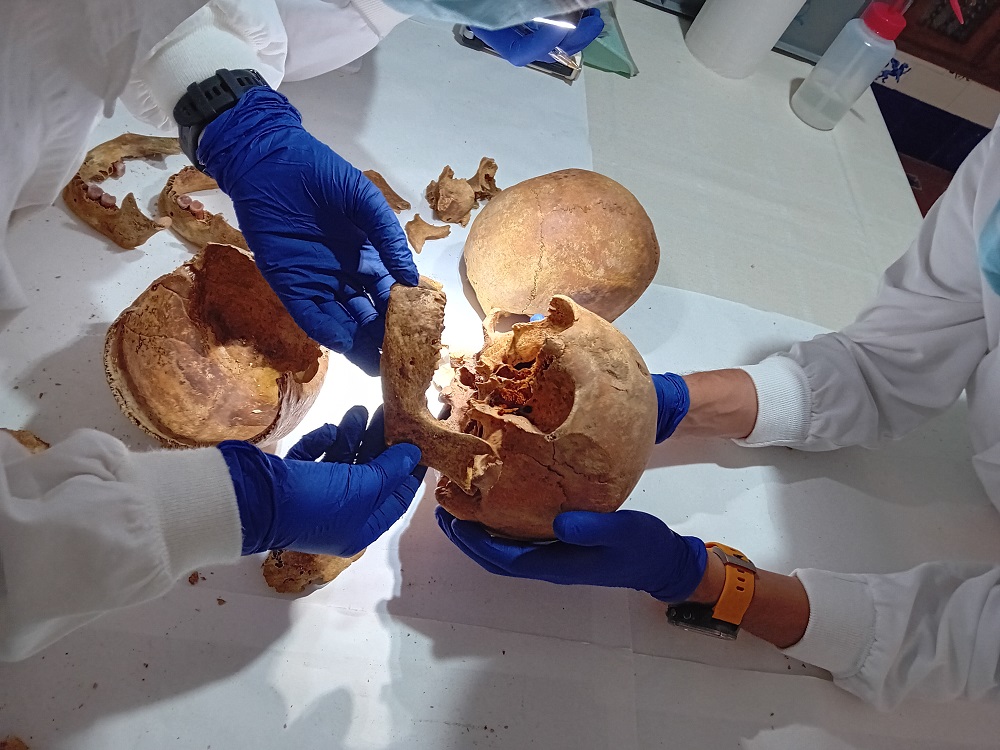
Expectations regarding the results of the analyses, based on ancient DNA and with a high degree of difficulty
Josep Maria Saladié offers an assessment of the results he expects from the analyses being carried out by the Genomics Service laboratory: “I am convinced that the DNA studies, carried out at UPF, will clarify whether there is a relationship of kinship between the three skulls that, according to oral records, are those of Abu-Zayd and two of his children. I think this version is not too credible given that the historical chronology of the death of these characters makes it somewhat unsustainable. However, I do believe that one of the skulls is that of the Moorish governor. The ancestral information of the DNA might tell us a great deal of things, given that we have no record of any descendants of Abu-Zayd, while as for royal prince Pere, we know the DNA of his mother, Blanca d'Anjou, buried in the Monastery of Santes Creus”.
Josep M. Saladié: “The ancestral information of the DNA might tell us a great deal of things, given that we have no record of any descendants of Abu-Zayd, while as for royal prince Pere, we know the DNA of his mother, Blanca d'Anjou, buried in the Monastery of Santes Creus”
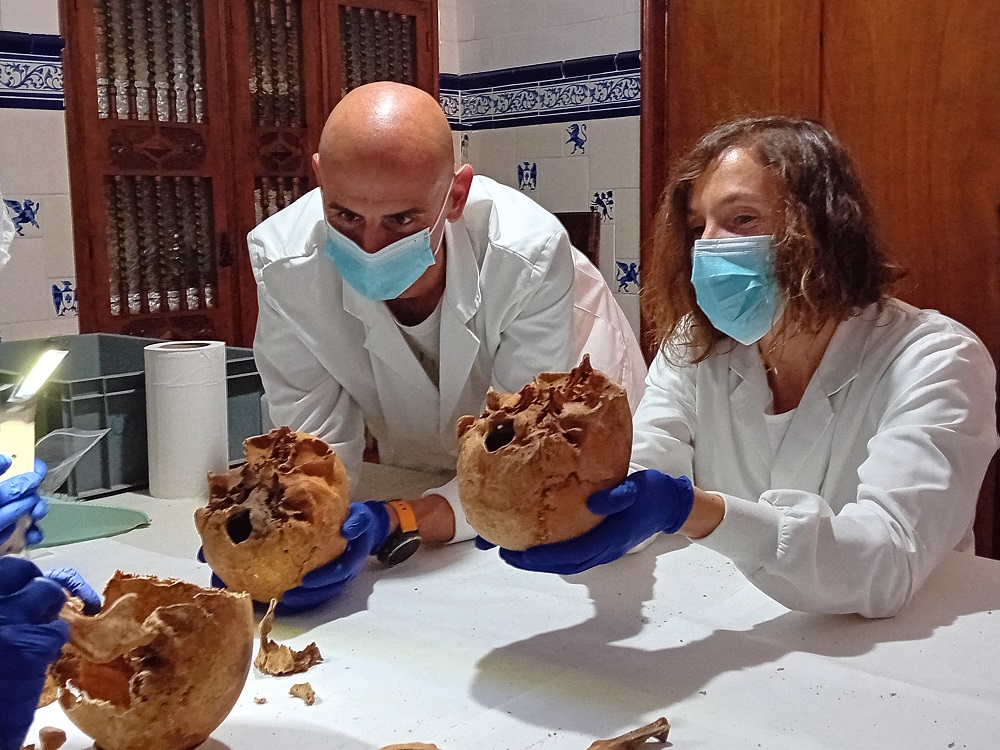
The UPF Genomics Service does not reveal such optimism as it wishes to lower expectations in the face of the analysis of samples extracted from ancient DNA. According to Roger Anglada, Núria Bonet and Raquel Rasal, complications arise on two sides: firstly, the samples, belonging to bones that may date back some 700 or 800 years (Abu-Zayd died in 1268, and royal prince Pere in 1381), are rather deteriorated; and secondly, because they cannot make a comparison with any guarantees (despite the available DNA samples of Blanca de Anjou), as happens, for example, with the victims of the Civil War found in mass graves and their living relatives, who have given their DNA, a task that is conducted with great precision and reliability, and makes comparing and ruling out easier.
Roger Anglada: “This project is scientifically very attractive for us, and can bring us many things"
“This project is scientifically very attractive for us, and can bring us many things. We are experts in modern DNA, because in our laboratory we use cutting-edge technology, but in ancient DNA we can say that we are beginners, and there are very few people who can fuse these two worlds”, Roger Anglada reflects .
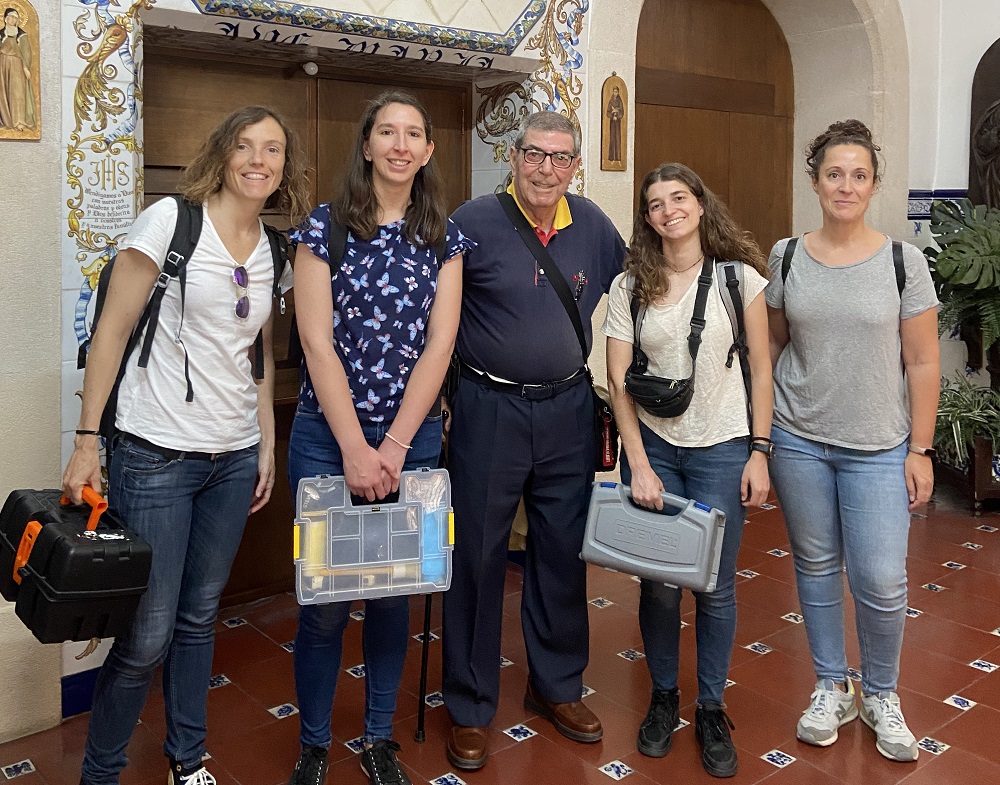
The lab is currently finalizing the DNA extractions. Once validated, the analyses will begin, with the most appropriate technology and strategy, depending on the sensitivity of the extracted DNA. “This second part can take shorter or longer, depending on the system we end up using. We want to compare the samples to each other, and maybe there are some better and some worse ones. We hope to have results in the coming months”, Núria Bonet states.
Roger, Núria and Raquel are delighted to be able to carry out the research, for which the University has provided every assistance: “We are really enthusiastic and excited about this project because we feel privileged, but we are the first to realize the degree of difficulty involved. At the moment we are riding an emotional roller coaster”, they reveal.
